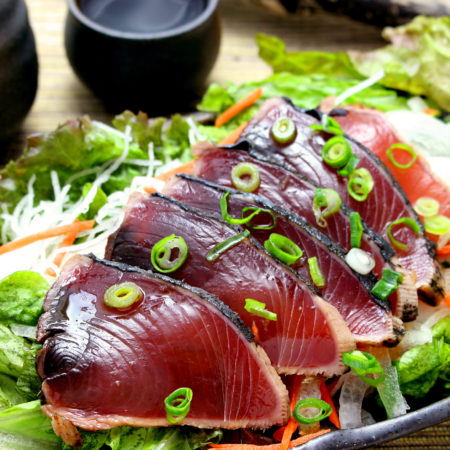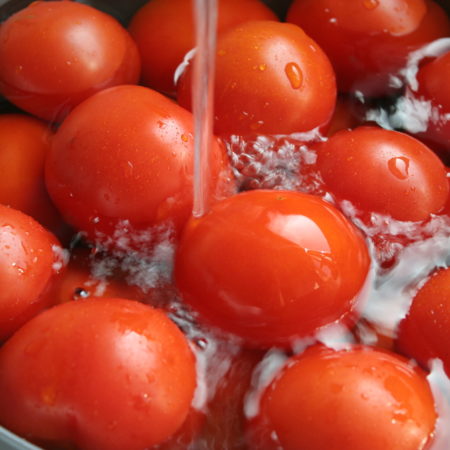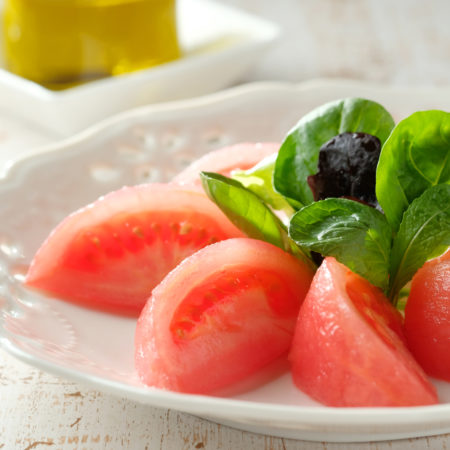Aoki Shuzo (Aoki Brewery), established in 1805, late Edo period, has produced all fine quality premium Sake, located at Aisai City, in a 30-minute train ride distance from Nagoya, Aichi Prefecture.
In 1959, a very strong typhoon hit this Aisai City, and caused huge floods. All of their facilities at the brewery got damaged. As the brewery stood at zero meter above sea level, all its facilities got soaked in water, over-flooded from the sea that located about 10 km away from the brewery. Literally, the typhoon blew all their properties away. Against this, however, the 13th president of Aoki Shuzo got shaken it off and energetically delivered his commitment to revitalize their brewery, piece by piece. He gave it a re-birth of our brewery and made a new start to be a brewer of real authentic Sake; consistently committed to make Sake by traditional methods of “Yamahai” and then “Kimoto”.
History
Since 1805

Our Sake
Robust but Elegant
Their Sake are all coming out to be very powerful, staying Rich and Robust as well as Delicate and Elegant, enjoyable at any levels of temperatures; Still Robust even as very hot at 60 degrees Celsius, moreover Gentle when it goes to “Kanzamashi” (After warming Sake up to 50 degrees Celsius and naturally cool down back to room temperature around to 18 degrees Celsius), Elegant even chilled at 7 degrees Celsius. You will find fresh finish but long after-flavor as well as the indicative of rice “Umami” in it, together with well-balanced acidity.
Definitely, Their Sake fills you with lots of joy. Give it a try, and you will understand what real authentic Sake is, by your experience.


Commitment
Generation by generation
Their Sake are all categorized into “Tokubetsu Meishoshu”. Their “Shubo” or “Moto” (yeast starter) are mostly brewed up in the process of “Yamahai” or “Kimoto”. Their Sake are fermented and grew up in our very gifted environment, preciously inherited from our predecessors of the Aoki family and sequentially toughened generation by generation. No yeasts are needed to add to make Sake, all fermented with “Kuratsuki Kobo” (yeasts variably live in this Kura, brewery).
Their Sake are all brewed up in Japanese very traditional methods; like using “Kai (*1)” for steering “Moromi” and doing “Daki (*2)” for warming up “Moromi” (see the photos below). Needless to say, only the skilled experienced “Kurabito” (workers in brewery) are able to carry out all these traditional processes to produce Sake, to complete it to be real.
All their Sake are fermented with “Kuratsuki Kobo” (literally, natural occurring yeast at the brewery) and no ampuled yeasts added.
Sake brewed differs in years. It surely depends on how microorganism works, and how they work together with all the surroundings. …yes, it is “one time, one meeting”.
Their Sake are produced only from “Shuzo Kotekimai”, designated Sake rice. They visit rice fields to see how and what rice gets grown up in the fields each year. Later on, they see all the prospective best combinations for the best Sake to produce, among rice, milling rates of rice, yeasts, and “Shubo (yeast starter)”. The decision is to be made for the best combination out of them for the best. …How they get the right answer? They see it, they feel it and they find it.
*1: “Kai”: a stick used for “Motosuri” (ramming “Shubo”), and also used for steering “Moromi” as mentioned above. The below left photo is taken at when “Motosuri” was ongoing at Aoki Shuzo in 2019
*2: Daki:a method for rising “Moromi” temperature by putting hot pots into “Moromi” for more saccharification. The below right photo is taken at Aoki Shuzo in 2019


Sake it should be
Fermented Completely
Their Sake are completely fermented until the very last moment, the right before pressed, as that gives the effect of sharp finish. Surely, longer “Moromi” can stay in tanks before pressing, more deepened flavors “Moromi” can have inside, as all sugar can turn out to be alcohol. However, this completion of fermentation is realized only if yeast could survive long enough to turn out all sugar to alcohol in “Moromi” (otherwise, sugar would remain in “Moromi”). To see completion of fermentation, our commitment is also set on “nurturing” tough yeasts at the phase of “Shubo” (yeast starter), and that’s why we insist of doing it by the traditional method of “Yamahai” or “Kimoto”, not by “Sokujo” (fast brewing method of adding lactic acid artificially, which is commonly used nationwide).
By all means, the three elements are very important for them to “nurture” Sake to have wonderful sharp finish, while it has highly intensive alcohol content; 1) “Kuratsuki Kobo”,which have been surviving for ages and been evolved tougher and tougher at our brewery, 2) “Yamahai” or “Kimoto”, which definitely requires lactic acid coming from naturally occurring lactic bacteria in the air, and 3) completion of fermentation, which allows yeasts in “Moromi” to turn out all sugar into alcohol.
After “Moromi” pressed, Sake get stored in bottles if it goes as “Nama” (only one time pasteurized). If not, which is in the most cases, Sake get stored in tanks to sit and wait still at room temperature right before filtering. The sizes of storage containers have effects on Sake to grow up. When Sake gets stored in bigger tanks, Sake tends to be dynamic and robust, as Sake could move more freely in more spacious containers. When Sake gets stored in smaller containers, Sake tends to be sharp and clean as Sake could behave well and more smartly in its designated space. Totally, it depends on how Sake wants to be, and we hear it and see it …and decide which containers to store for each Sake.
As Sake ordinarily gets stored after one time pasteurizing, either of very fresh “Nama” or sake grown-up in tanks is coming up to give a wonderful choice for “kan (warming up Sake)”, including outstanding “Umami” remained in it.


Message from Toji
Eyes from Toji (Master of brewery)
The Toji of Aoki Shuzo, says that there are 4 factors to decide impressions of Sake; 1) temperature 2) time after opening a bottle 3) how to pour 4) glasses (sakeware).
The 1st is on temperature. Unlike other alcohol beverages, you will easily find yourselves enjoyed with Sake at various temperatures; very chilled, at room temperature, lukewarm (“Nurukan”) or very hot (“Atsukan”).
The 2nd is on what to dilute Sake with. Sake can enjoyably be diluted with various items; with cold water, hot water, Soda and so on. From one bottle of Sake, you can have joy with several kinds of tastes; you would explore various options in what to dilute with in addition to temperatures.
The 3rd is on Time, passed after opening up a bottle. When you unscrew a bottle, it provides with a new start of growth process in Sake; Flavor changes as time goes by. It shows different impressions on each day like Day 1, Day2, Day 7…and Day 30. Although many believe that Day 1(especially the right after unscrewing) should be the best to be served, it does not necessarily true. Time changes Sake somehow in a good way.
The 4th is on how to pour Sake and sakeware to be used with. Pour gently? Pour roughly? It makes a quite difference. Served in a very thin glass or “Guinomi” ? What to use with also changes how you feel a lot.
With these above 4 factors in mind, he would recommend starting to taste Sake at room temperature at the very beginning. This should give a flat situation to make a fair judgement of Sake. Feel it at room temperature and move on to the next phase; going through all the 4 factors to explore all options for your best Sake; try at different temperatures, in a different sakeware by different way of serving at different time passed by. You will find your best for each Sake. You will love it.
Professionally, he produces Sake, in other words, he “nurtures” Sake to become more comfortable for you to be with, especially at your home. Hopefully, our sake is to be always available for you to get relaxed at your home, at any time for your reach whenever you would like to drink.
Personally, he often serves their Sake, “Komeso” at room temperature, Lukewarm or Kanzamashi (After warming Sake up to 50 degrees Celsius and naturally cool down back to room temperature around to 18 degrees Celsius).
He is fully convinced by himself that this is the way to maximize the potential of our Sake. A sip offers me with well-balanced acidity and condensed “Umami”, spreading out all over himself. Then, the supreme relaxation comes down, next.
May their Sake relax you comfortably, releasing any stress out of yourselves, at the end of a day.
That is what he longs for and what our Sake is meant to be.
Quoted from Aoki Shuzo corporate website, Translated by nao





















